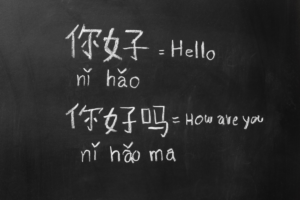Machine translation – the bane of any translator’s existence. There has been a lot of chatter regarding the quality of this new tool in recent years. And there is no denying that MT is rapidly improving and becoming a staple in our society.
This gives rise to the question though, is machine translation good enough? Many are strongly against this tool but the translation service landscape is changing. Machine translation is beginning to see some praise and is being included in many companies’ workflows.
But what is it then? Is it good? Is it bad? Let’s see.
The critics
Real machine translators have been around since the 1900s. But it wasn’t until Google and its access to abundant data that it really became a thing. Now there are multiple projects on this field, in particular statistical machine translation and example-based machine translation, but we won’t get into that here.
For years, there have been two sides to this discussion – the naysayers and the backers. As you can imagine, the naysayers strongly believe that machine translation will never replace real translators or even a decent quality translation service. We all know, to an extent, that this is partially true. We are constantly presented with silly automated translations by Google or Facebook even, and we laugh it off “oh, these translations are so crazy!”
However, do we really care about this type of translation? Facebook status and comments? Not really. And this is the worst type of content for a machine to tackle since they provide a little context, are poorly written or are trying to be witty with wordplays, memes, etc. A machine can’t interpret these sentences full of double meanings and focused on viral content… yet.
There is still another strong argument to be made here. Can we really trust a machine to convert sensitive documents from one language to several others? Legal documents that establish legislation or decide a court’s decision? Medical documents for foreign doctors to continue a patient’s care? Or even instructions for heavy machinery extremely dangerous to handle? This has been the naysayers’ argument for years now and I believe it will continue to be a valid one. Even though there are bad translators too, this responsibility cannot solely rely on machines.
The backers
 On the other side of the coin, the global market continues to invest in machine translation and will keep to do so for several reasons. One, accessibility. We live in a tech world and people are constantly creating new ways to make our world more connected and easier; obviously, this includes overcoming language barriers. Two, it is cheaper for companies. Lastly, the technology in this field is evolving so fast that the quality skyrockets year after year.
On the other side of the coin, the global market continues to invest in machine translation and will keep to do so for several reasons. One, accessibility. We live in a tech world and people are constantly creating new ways to make our world more connected and easier; obviously, this includes overcoming language barriers. Two, it is cheaper for companies. Lastly, the technology in this field is evolving so fast that the quality skyrockets year after year.
And even several professional translators use machine translation to aid their work. This technology is becoming so good and reliable that, in some types of documents, it is easier to upload them, convert them to other target languages and just proofread the whole thing. The quality of these machines has been turning translators to their side.
It is also important to note that quality improvement is not the only thing that is winning people over; rather, it is the companies’ workflow. Big enterprises or translation agencies now resort to machine translation and ask translators to review the documents – this is called MTPE (Machine Translation Post-Editing). This is a super common practice now and it is not hard to guess why. It is cheap. They pay language professionals half the price they would charge for their usual work. As long as the companies have these incentives, machine translation will continue to evolve.
That is not to say that translators do not profit from this, but from our perspective, it is a gamble. Some documents come out extremely readable and well converted, while others make no sense at all and we end up wasting more time than if we were translating it ourselves, for half the price!
Final thoughts
As everything that is related to technology, we all need to be ready to accept evolution and adapt to the times. Yes, machine translation is no longer a mess and it is now a pretty reliable tool. So reliable in fact that companies are resorting to it almost exclusively. There are even several big IT companies that do not even hire translators to deal with their documents, they just convert them in a MT tool. Since their terminology is not hard to understand and IT people can easily understand the meaning even if it’s poorly written, they skip the localization process.
Year after year, translation is becoming less glamorous and more industrial. Who knows, MT tools might even replace language professionals someday! Let’s hope it doesn’t though.











